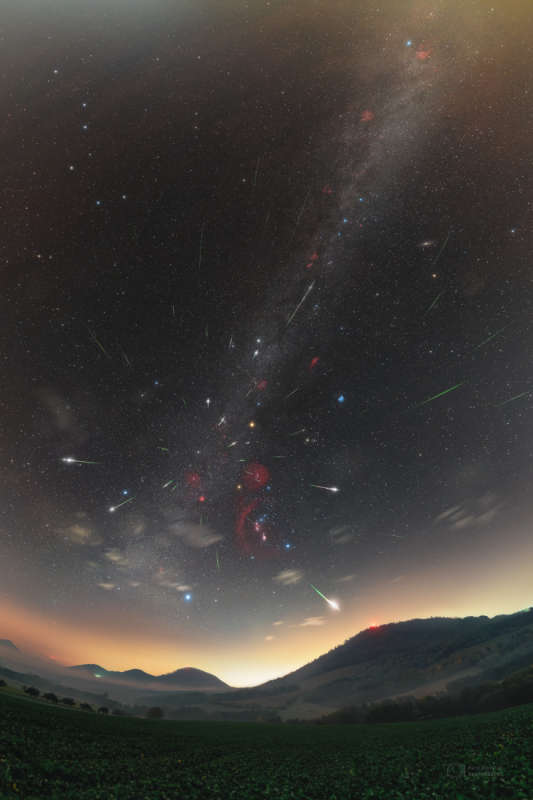Credit & Copyright: Petr Horalek /
Institute of Physics in Opava
Explanation:
History's first known periodic
comet
Halley (1P/Halley)
returns to the inner Solar System every 75 years or so.
The famous comet made its last appearance to the naked-eye in 1986.
But dusty debris from Comet Halley
can be seen raining through planet Earth's skies
twice a year during two annual meteor showers, the
Eta
Aquarids in May
and the
Orionids
in October.
Including meteors near the shower maximum on October 21,
this composite view
compiles Orionid meteors
captured from years 2015 through 2022.
About 47 bright meteors are registered in the panoramic night skyscape.
Against a starry background extending along the Milky Way,
the Orionid meteors all seem to radiate
from a point just north of
Betelgeuse in the familiar constellation of the Hunter.
In the foreground are mountains in eastern Slovakia near the city of Presov.
1999 2000 2001 2002 2003 2004 2005 2006 2007 2008 2009 2010 2011 2012 2013 2014 2015 2016 2017 2018 2019 2020 2021 2022 2023 2024 2025 |
Yanvar' Fevral' Mart Aprel' Mai Iyun' Iyul' Avgust Sentyabr' Oktyabr' Noyabr' Dekabr' |
NASA Web Site Statements, Warnings, and Disclaimers
NASA Official: Jay Norris. Specific rights apply.
A service of: LHEA at NASA / GSFC
& Michigan Tech. U.
|
Publikacii s klyuchevymi slovami:
comet Halley - meteor shower - kometa Galleya - Meteornyi potok
Publikacii so slovami: comet Halley - meteor shower - kometa Galleya - Meteornyi potok | |
Sm. takzhe:
Vse publikacii na tu zhe temu >> | |
